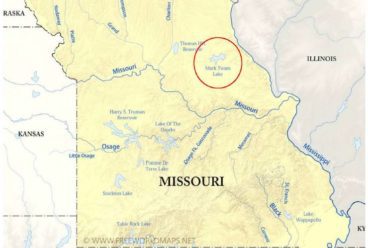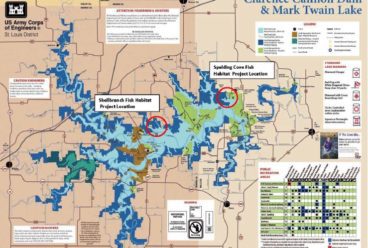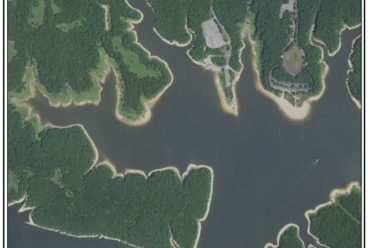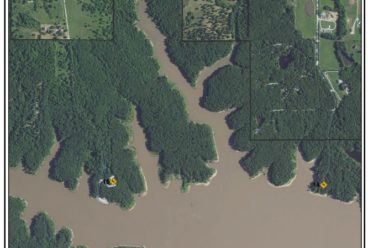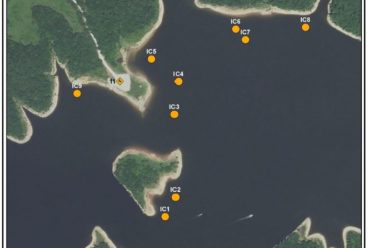Overview
-
Status
Ongoing -
Estimated Completion
2023 -
Location
Mark Twain Lake, Missouri -
Grants Received
$30,000 -
Total Budget
$81,500 -
Partners
U.S. Army Corps of Engineers - Mark Twain Lake, MTL Friends of Recreation and Environmental Stewardship (FOREST) Council, Missouri Department of Conservation, Community Volunteers
Authorized by the Flood Control Act of 28 June 1938, Clarence Cannon Dam and Mark Twain Lake is a U.S. Army Corps of Engineers civil works project located in Northeast Missouri. Its authorized purposes are for flood risk management in the Salt River Basin, hydroelectric power generation, water supply, fish and wildlife conservation, recreation, and incidental navigation support to the Mississippi River system. The dam and associated reservoir began full operation in 1984.
Threats
During initial development of the reservoir, a unique management strategy was implemented in the basin that differed from traditional methods employed by Corps of Engineers at civil works projects. Instead of clearing the entire basin, standing timber was retained in the tributaries and associated flood plains to provide aquatic structure. The resulting management strategy created an environment that supported a strong, sustainable and vibrant fisheries that has been enjoyed by anglers since 1984. The reservoir though, has progressed through the natural maturation process associated with man-made impoundments. The standing timber is deteriorating, and the underwater structure it creates is diminishing. This results in detrimental impacts to aquatic invertebrate populations, species recruitment, and protective habitat.
The authorized operational requirements of Clarence Cannon Dam and Mark Twain Lake create unique challenges to fisheries management. The flood risk mission obligates the reservoir to sustain elevated pool levels during seasonal rain events. The reservoir also serves as a water source to support a hydro-electric power mission, which requires substantial outflows in order to meet the demands of the power distribution infrastructure. Both factors contribute to a pool elevation that fluctuates 50 feet in the reservoir basin. The cyclic nature of these operations contributes to an environment conducive to shoreline erosion and structural degradation of shoreline and submerged habitat. The topography of an impounded river valley poses challenges for shoreline fishing access. The Salt River Basin is characterized by broad impounded river bottoms with steep to near vertical hillsides that form the perimeter shoreline. Conditions are ideal for fisherman utilizing boats in pursuit of their angling experience, but does not lend itself to land-based shoreline fishing access. Though not prevalent at the lake, there are locations that are traditionally used for this purpose. The lack of developed access, combined with the loss of submerged habitat does not project an attractive opportunity to the vast majority of the demographic seeking this recreational opportunity.
Though Mark Twain Lake has sustained a strong and viable fishery, the decline in structural underwater and shoreline habitat, and the limited shoreline access is contributing to an environment not proactive to the pursuit of recreational angling. This proposal will on a small, but impactful scale, address the loss of structural habitat, create appealing shoreline access to the management unit, and encourage increased recreational angling opportunities.
What FOR Is Doing
In May 2020, a consortium of resource professionals, tournament fisherman, recreational anglers, and community members was formed to develop a long-term fisheries habitat development plan for Mark Twain Lake. The members assessed current lake conditions, existing habitat structure, capabilities of independent entities, available resources, existing facilities, and the alignment of long-term goals.
Subsequent communication and collaboration yielded an initial five year management plan to establish artificial fisheries habitat at areas deemed imperative for implementation. The corporate goal of the plan is to establish new artificial habitat replacing the natural habitat which has deteriorated through the natural maturation process, or through the authorized operational requirements imposed upon the reservoir.
This project proposes the installation of artificial structure at two locations to restore approximately 60 acres of underwater fisheries habitat. The artificial structures are constructed of PVC materials and concrete that provide long-term durability, capable of withstanding the stresses of submerged and dry environments and designed to reduce snagging of traditional fishing tackle and equipment. The structures are placed at differing elevations in the basin of reservoir in a pattern to provide for stability and integrity of development. Furthermore, this project incorporates development of direct shoreline access to the restoration site which appeals to a broad demographic, including families, youth, senior citizens, and novice anglers. Though designed and placed as a shoreline fishing resource, the developed sites are still accessible to anglers conveying by boat.
The artificial structures utilized in this habitat restoration project are designed to replicate natural features and residual cover in the reservoir basin, and have been proven to be effective in providing structure for warm water fisheries at Mark Twain Lake. The following are the two structures that will be utilized in the project:
- Mark Twain Lake Cubes – 200 “MTL Cubes”, each measuring 5’ in height, 4’ in width, and 4’ in breadth are placed in deeper pool elevations. The cubes are constructed of 1 ½ inch PVC drain pipe and are intertwined with 100 feet of 4 inch drain tile tubing. The cubes are designed to standards proven to be effective in accommodating diverse species of game fish that suspend in differing depths and provide habitat at varying lake levels. These structures are placed in mass, generally 8 – 10 structures per site, with 10 – 12 sites established within the bounds of a bay or cove.
- Spider Blocks – 400 Spider Blocks are constructed for placement at the restoration sites. A standard 9” x 9” x 15”, dual cavity concrete block serves as the foundation of the feature. Concrete is placed in the cavities to secure ½ inch flexible irrigation tube serving as habitat structure. These structures are distributed in mass, generally 30 per site, with 6 -8 sites established within the bounds of a bay or cover. The blocks are placed at shallow depths in proximity to the shoreline providing littoral zone habitat favored by certain species of game fish, while also providing accessibility to shoreline fishing and vessel-oriented angling experiences.
Related News
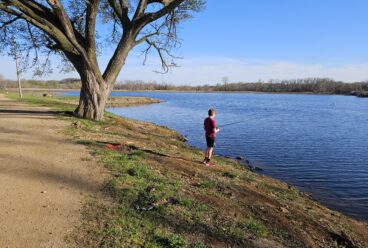
New Report Highlights Sportfishing Industry’s Expanding Economic Impact
Alexandria, VA – March 12, 2025 – The American Sportfishing Association (ASA) has released new data underscoring the growing economic influence of the sportfishing industry in America. The new Sportfishing in America report […]
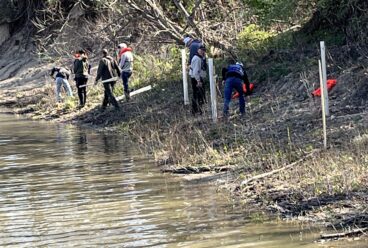
Lake Shelbyville Fish Habitat Alliance Working Hard this Spring!
Excellent work from the Friends chapter at Lake Shelbyville, Illinois! This spring, they planted 80 cypress trees as well as designed a new cube. Check it out!
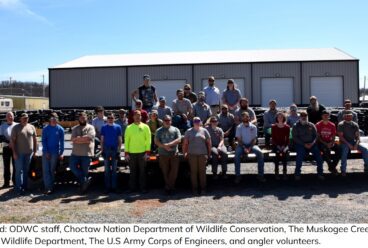
Partners Host Huge Day of Building Cube Habitat for Eufala Lake
Wow, 109 Shelbyville cubes in a day! Volunteers and partner agencies worked to mass-produce fish habitat for Eufala Lake earlier this month. Shelbyville cubes provide fantastic complex habitat in scenarios […]
Donate Today
to support similar habitat projects


